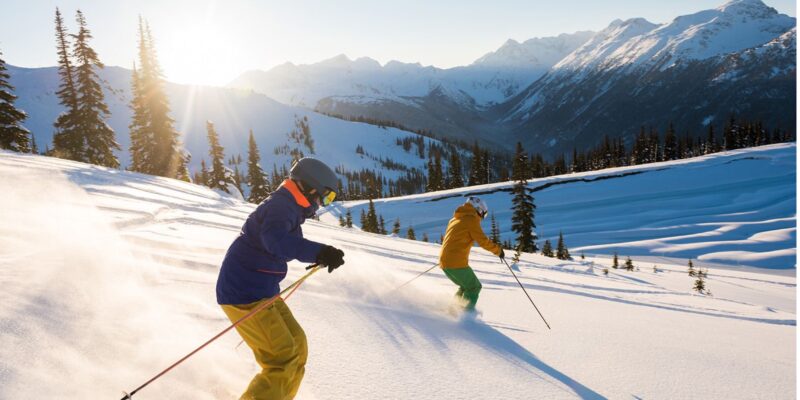Skiing down snow-packed slopes or strapping on ice skates, the winter season offers a variety of family– friendly fun, and activities for people at all skill levels. But winter sports may also come with unique safety risks. Some of these issues are due to bulky equipment, slippery surfaces, and frigid environments. During the winter there are thousands of people being treated at hospitals, doctor’s offices and emergency rooms for injuries related to winter sports.
According to the US Consumer Product Safety Commission, at one point almost 200,000 people were treated for injuries, from snow skiing, snowboarding, ice skating, sledding and tobogganing
Common winter sports injuries include sprains, strains, dislocations, and fractures. Many of these injuries happen at the end of the day, when people overexert themselves to finish that one last run before the day’s end. Most winter sports injuries can easily be prevented if participants prepare for their sport by keeping in good physical condition, staying alert, and stopping when they are tired or in pain.
Strengthen Your Core and Hips
Staying conditioned is very important, as well. With a strong core and good hip strength, you’re at a lower risk of falling, especially in sports like ice skating or skiing. Do exercises to strengthen your core and glute muscles, such as hamstring stretches. Also, Yoga is an excellent exercise for keeping balance.
Practice Winter Sports Safety
To help prevent injury during your favorite winter sports and activities, follow the safety tips below:
- Never participate alone in a winter sport.
- Keep in shape and condition muscles before participating in winter activities.
- Warm up thoroughly before playing or participating. Cold muscles, tendons, and ligaments are vulnerable to injury.
- Wear appropriate protective gear, including goggles, helmets, gloves and padding.
- Check that equipment is working properly prior to use.
- Wear several layers of light, loose and water- and wind-resistant clothing for warmth and protection. Layering allows you to accommodate your body’s constantly changing temperature. Wear proper footwear that provides warmth and dryness, as well as ample ankle support.
- Know and abide by all rules of the sport in which you are participating.
- Take a lesson (or several) from a qualified instructor, especially in sports like skiing and snowboarding. Learning how to fall correctly and safely can reduce the risk of injury.
- Pay attention to warnings about upcoming storms and severe drops in temperature.
- Seek shelter and medical attention immediately if you, or anyone with you, is experiencing hypothermia or frostbite. Make sure everyone is aware of proper procedures for getting help, if injuries occur.
- Drink plenty of water before, during, and after activities.
- Avoid participating in sports when you are in pain or exhausted.
Don’t Ignore Pain
While it’s easy to end up with bumps and bruises from falling, sometimes what you think is just a bruise could be something worse, like a stress fracture. Stress fractures, or microfractures on your bones, may occur when you do too much activity too quickly.
If you do get injured and need help, seek an orthopedic specialist.
Dr. Marshall P. Allegra is a board-certified orthopedic surgeon in private practice in Monmouth County for over 25 years. As an experienced diagnostician, Dr. Allegra can expertly determine your bone health, injuries, and then determine the best treatment options to boost your normal life, restore functionality and range of motion as quickly as possible and avoid long term implications.

